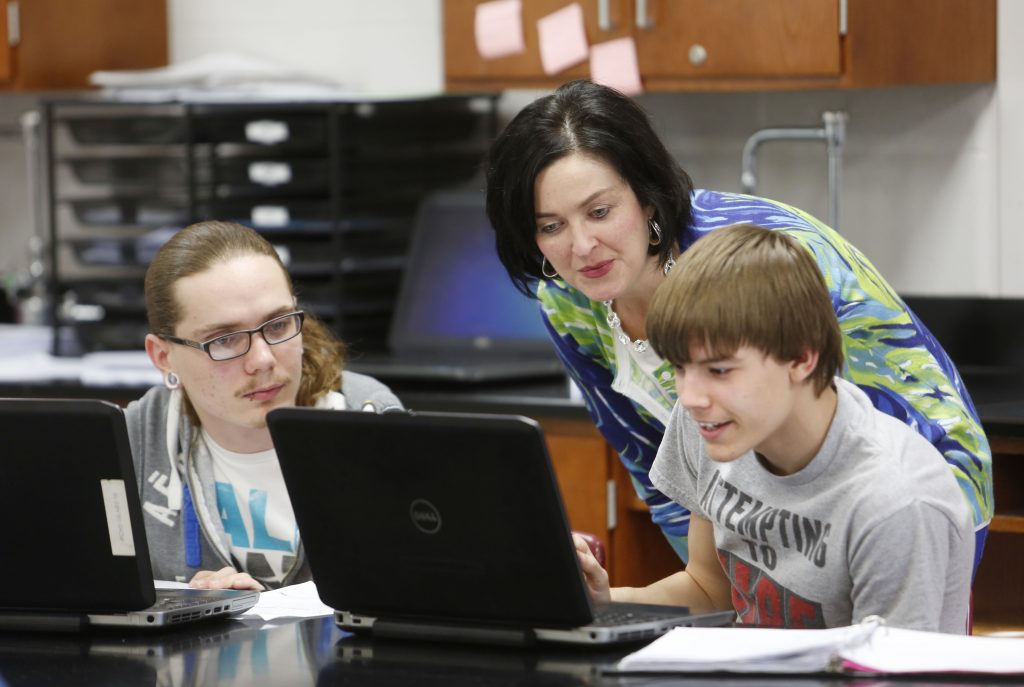“Thinking is hard work,” laughs Stephanie Harmon, who teaches physics, Earth science, and physical science at Rockcastle County High School in Kentucky. One of her primary goals is teaching students to think. “So much happens to us on a daily basis that we take for granted as long as everything is going okay,” she says. “What happens when something goes wrong? How do we make sense of that? What do we do about it? Science helps us foster critical thinking and problem-solving capacity . . . But you have to build that capacity in students. Science does that.”
In 2013, when she was looking for some robust Earth science materials, and wasn’t finding any, Stephanie discovered High-Adventure Science (HAS) and became a field-test teacher. “It was a relief,” she says. “There isn’t anything I could do in a traditional fashion that would even begin to mimic the experience that the students have using this.”
Water issues are real in her Kentucky community where there’s a serious problem with algae growth in the city water supply. Her class used the HAS fresh water module to guide collection of samples from a creek that runs through the high school property. “The module fits in with the big picture. It wasn’t just reading a bunch of articles about water quality, or looking to see what the book said. It became real.”

Stephanie is consciously preparing students for issues they will face as adults: energy issues, water issues, clean air issues. “It can’t just be a school thing,” she insists. “The purpose of taking science classes is to be scientifically literate. What that means is you understand those common experiences that we all have: if you’re called to jury duty, you know how to make sense of forensic data; if you’re in the doctor’s office and you get a series of lab results, you know how to make sense of that information; when your neighbors detect radon gas in their basement, what does that mean you need to do? Those are the types of things we need to know, and that’s what scientifically literate means to me.”
From 2010-2013 Stephanie worked on the team that reviewed the Kentucky Next Generation Science Standards. In 2014 she won the Kentucky Science Teacher Association’s Outstanding High School Science Teacher award. And since 2016 she has been part of the team that developed a 3D NGSS state science assessment. During the 2018 NSTA national conference in Atlanta, she talked to a packed room about scientific argumentation and modeling using High-Adventure Science. We’re gratified that such an accomplished teacher uses our STEM resources.
Happy Teacher Appreciation Day to Stephanie and all teachers!
* * *
High-Adventure Science addresses big issues in Earth and space science: climate change, fresh water, land management, clean air, and more. It emphasizes the excitement of scientific discovery using the same methods that practicing scientists use so students can see science as a dynamic, evolving process. HAS lessons and interactives are available free online, including some in Spanish. They are also on the National Geographic Education website.